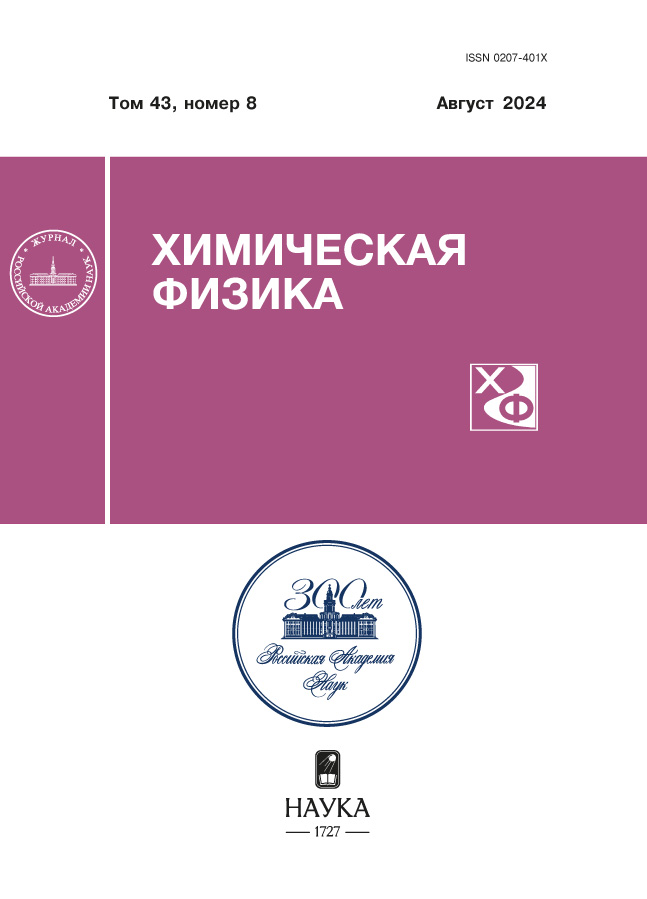The effect of aluminum in its mixtures with ammonium nitrate on the ignition of burning and its transition to convective burning regime
- Autores: Khrapovskiy V.E.1, Khudaverdiev V.G.1,2, Sulimov A.A.1, Komissarov P.V.1, Basakina S.S.1
-
Afiliações:
- Semenov Federal Research Center of Chemical Physics, Russian Academy of Sciences
- Institute of Radiation Problem of the Ministry of Science and Education of the Republic of Azerbaijan
- Edição: Volume 43, Nº 8 (2024)
- Páginas: 92-100
- Seção: Combustion, explosion and shock waves
- URL: https://cardiosomatics.ru/0207-401X/article/view/681888
- DOI: https://doi.org/10.31857/S0207401X24080109
- ID: 681888
Citar
Texto integral
Resumo
The ignition of normal layer-by-layer burning and its transition to convective burning regime in mixtures of ammonium nitrate with bulk density aluminum are studied. The experiments in a constant-volume bomb with pressure registration were carried out. The porosity of the samples was 0.55–0.59, the particle size of the ammonium nitrate was varied from 20–40 to 250–630 µm, and the aluminum content varied from 8 to 47 wt %. Aluminum of two grades was used: ASD4 and PAP2. It is shown that mixtures are capable to be ignited at the igniter pressure close to or above the critical (minimum) value. The values of the critical pressure of the igniter, the pressure and time at which burning and convective burning occurs for mixtures with different particle sizes of ammonium nitrate and aluminum and different concentrations are measured. The replacement of aluminum ASD4 with PAP2 leads to a significant (by an order of magnitude or even more) decrease in the values of critical pressure and pressures at which the burning and convective burning begins.
Palavras-chave
Texto integral
Sobre autores
V. Khrapovskiy
Semenov Federal Research Center of Chemical Physics, Russian Academy of Sciences
Autor responsável pela correspondência
Email: khrapovsky@mail.ru
Rússia, Moscow
V. Khudaverdiev
Semenov Federal Research Center of Chemical Physics, Russian Academy of Sciences; Institute of Radiation Problem of the Ministry of Science and Education of the Republic of Azerbaijan
Email: khrapovsky@mail.ru
Rússia, Moscow; Baku, Azerbaijan
A. Sulimov
Semenov Federal Research Center of Chemical Physics, Russian Academy of Sciences
Email: khrapovsky@mail.ru
Rússia, Moscow
P. Komissarov
Semenov Federal Research Center of Chemical Physics, Russian Academy of Sciences
Email: khrapovsky@mail.ru
Rússia, Moscow
S. Basakina
Semenov Federal Research Center of Chemical Physics, Russian Academy of Sciences
Email: khrapovsky@mail.ru
Rússia, Moscow
Bibliografia
- Prugh R.W. // Process Safety Progress. 39 (4), 12210 (2020). https://doi.org/10.1002/prs.12210
- Wes Y. // Winston-Salem Journal. 2022. February. № 7. P. 1.
- Belyaev A.F., Bobolev V.K., Korotkov A.I. et al. // Transition of Combustion of Condensed Systems into an Explosion (Nauka, Moscow, 1973) [in Russian].
- Belyaev A.F. Goreniya, Detonation, Rabota Vzryva of Condensed Systems (Nauka, Moscow, 1968) [in Russian].
- Khrapovskii V.E. // Russ. J. Phys. Chem. B 17(2), 439 (2023). https://doi.org/10.31857/S0207401X23030068
- Khrapovskii V.E., Khudaverdiev V.G., Sulimov A. A. // Goren. Vzryv. 6 (1), 211 (2013).
- Ermolaev B.S., Sulimov A.A., Khrapovskii V.E. et al. Russ. J. Phys. Chem. B 5(4), 640 (2011). https://doi.org/10.7868/S0207401X16020047
- Ermolaev B.S., Khudaverdiev V.G., Belyaev A.A., Sulimov A.A., Khrapovskii V.E., Russ. J. Phys. Chem. B 10(1), 42 https://doi.org/10.7868/S0207401X16020047
- Ermolaev B.S., Khudaverdiev V.G., Belyaev A.A. et al. // Goren. Vzryv. 13 (2), 80 (2020). https://doi.org/10.30826/CE20130209
- Ermolaev B.S., Khudaverdiev V.G., Belyaev A.A. // Goren. Vzryv. 8 (2), 234 (2015). https://doi.org/10.7868/S0207401X16020047
- TU (Technical Conditions) 1791-007-49421776-2011: Aluminum Powder ASD-4 (2011).
- GOST (State Standard) 5494-95: Aluminum Powder (2006).
- Dulnev G.N., Zarichnyak Yu.P, Teploprovodnost of mixtures and composite materials. Reference book. (Energy, Leningrad, 1974) [in Russian].
- G. Golub. J. Spacecraft. 2 (4), 593 (1965). https://doi.org/10.2514/3.28234
- L.H. Caveny, R.L. Glick J. Spaceraft. 4 (1), 79 (1967). https://doi.org/10.2514/3.28813
- N.N. Bahman, I.N. Lobanov. Fiz. Goreniya Vzryva. 10 (1), 46 (1983).
Arquivos suplementares

















